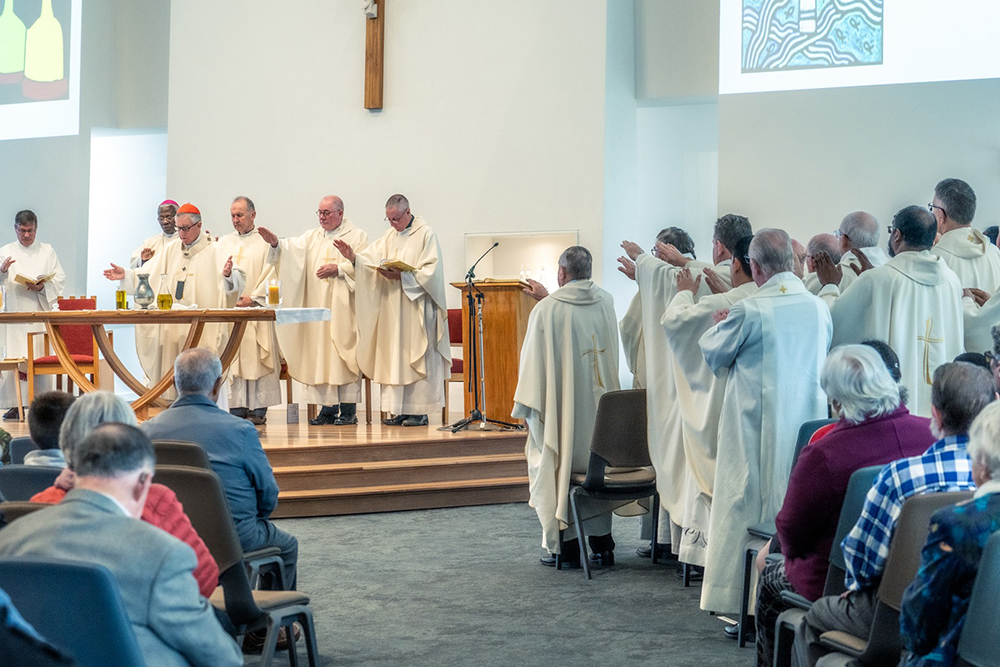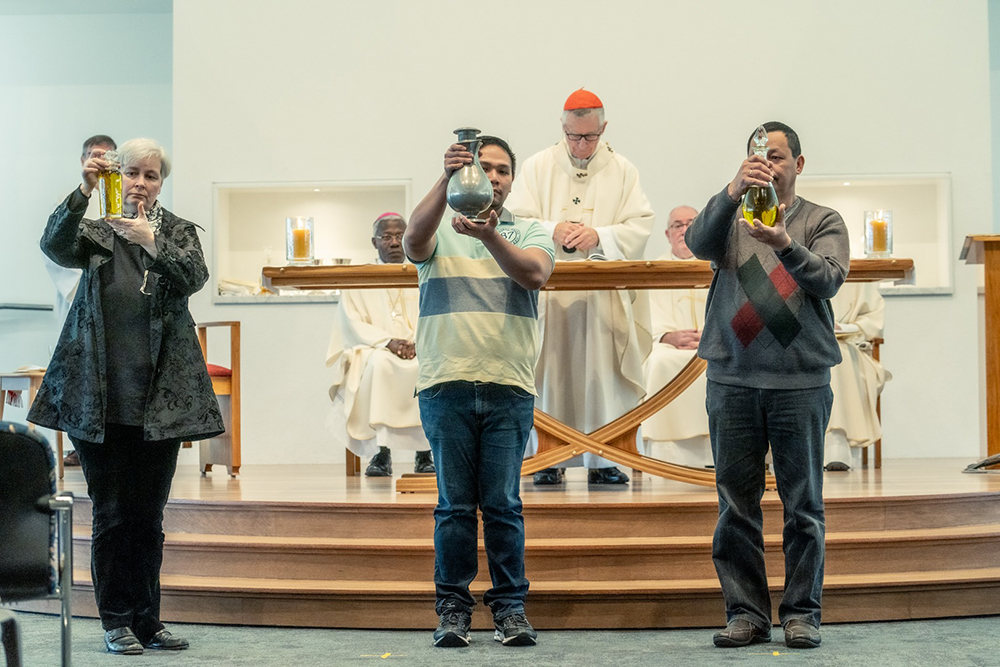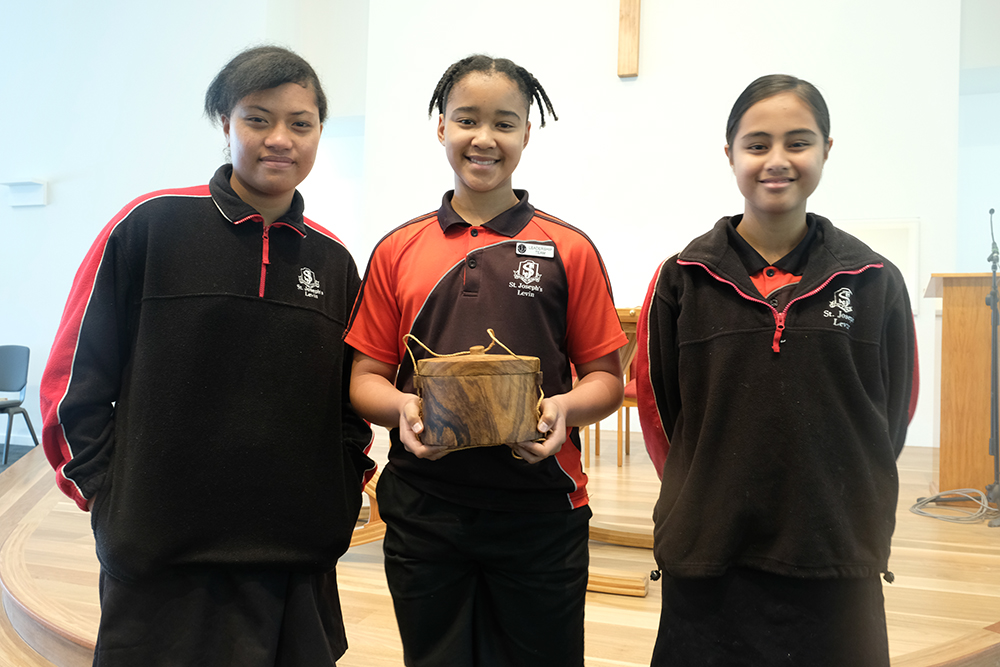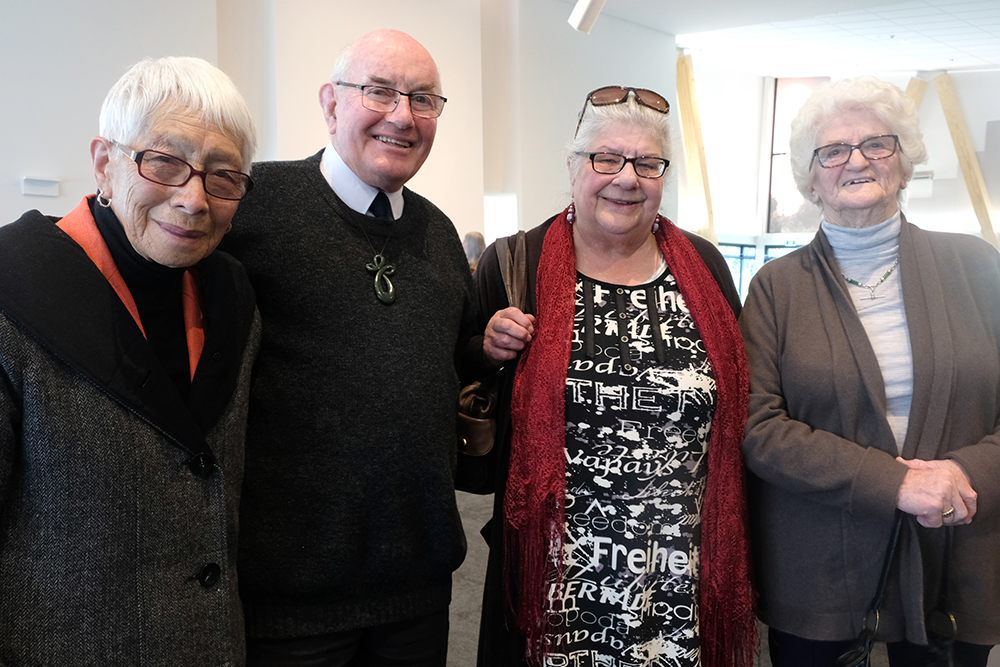WelCom September 2020
Annette Scullion

Clergy and hundreds of parishioners and Catholic school students from across the Wellington and Palmerston North dioceses came together at Our Lady of Kāpiti Church, Paraparumu, on Saturday morning, 1 August 2020, for the celebration of this year’s Chrism Mass.
Cardinal John Dew, Archbishop of Wellington and Administrator of the Diocese of Palmerston North presided. Among the concelebrating were the Apostolic Nuncio, His Excellency Archbishop Novatus Rugambwa; Vicar General for the Archdiocese of Wellington, Mons Gerard Burns; Local Administrator Diocese of Palmerston North, Mons Brian Walsh; Our Lady of Kāpiti Parish Priest, Fr Michael McCabe.
Parishes each had a representative or representatives present to collect the Sacred Chrism and Blessed Oils to take back to their parishes.
The Chrism Mass is one of the most important liturgies of the year and usually takes place in a diocesan cathedral during Holy Week. However, due to Covid-19 Level 4 lockdown restrictions in April, the Mass was postponed until August under Alert Level 1.
Our Lady of Kāpiti Church was chosen as the Mass venue due to the current closure of Sacred Heart Cathedral in Wellington and the more central location of Paraparaumu for people of both dioceses to come together for this occasion.
The Chrism Mass takes its name from the blessing of the holy oils, used in the sacraments throughout the year, which are then given to priests and ministers to take back to their parishes.
The bishop, joined by the priests of the diocese, gather at the cathedral to celebrate the Chrism Mass. The Mass manifests the unity of the priests with their bishop. It is often the largest gathering of clergy and faithful held in most dioceses during the year.
At the Chrism Mass the bishop blesses three Holy Oils:
- the Oil of the Sick – used in the rite of the Anointing of the Sick;
- the Oil of the Catechumens – used in the sacrament of Baptism; and
- consecration of the Oil of Holy Chrism – used in the sacraments of Baptism, Confirmation and Holy Orders, as well as for the consecration of altars and the dedication of churches.
While the Oil of the Catechumens and the Oil of the Sick are ‘blessed’, the Sacred Chrism is ‘consecrated’. Holy chrism is a mixture of olive oil and balsam, an aromatic resin. The bishop breathes over the vessel containing the chrism, a gesture which symbolises the Holy Spirit coming down to consecrate this oil, and recalls the actions of Jesus in John 20:22, when he breathed on the apostles and said, ‘Receive the Holy Spirit…’. The priests concelebrating the Mass extend their hands toward the vessel containing the chrism and say the prayer of consecration silently as the bishop pronounces it over the chrism.
This tradition is rooted in the early Church as noted in the Gelasian Sacramentary (named after Pope Gelasius I, d. 496), but was later absorbed into the Holy Thursday evening Mass. Pope Pius XII issued a new Ordinal for Holy Week, which reinstituted a special Mass of the chrism distinct from the evening Mass.

Prayer of Consecration over the Holy Oils. 
Parishioners hold and decant oils to take back to parishes. 

Students from St Joseph’s School, Levin with Sacred Oils for their parish, (l-r) Stella, Morgan and Elizelle. 
Dannevirke parishioners with Mons David Bell (l-r) Eva Wright, Theresa Mills and Francie Walsh.
Photos: Bernie Velasco; Annette Scullion
After the blessing of the Oils, Cardinal John addressed the representatives taking the Sacred Oils back to their parishes.
“Dear Parish Representatives who will return these Sacred Oils to your parishes, Monsignor Brian and priests and people who will take these oils back to the dioceses. Thank you for coming to this Mass of Chrism.
You are entrusted with these Taonga, these sacred oils, you are commissioned to take these home to your parish communities and present them in your parish at an appropriate time.
This Oil of the Sick has been blessed for the healing of body, mind and soul. May the sick, who are anointed with it, experience the compassion of Christ and his saving love.
This Oil of Catechumens has been blessed for the anointing of those preparing for Baptism. Through this anointing people will be strengthened by Christ to overcome evil in all its forms, and live lives of goodness and holiness as they prepare for the saving waters of Baptism.
This holy Chrism has been consecrated by we priests gathered here today. It will be used to anoint those who are Baptised, those who are to be Confirmed, Bishops and Priests at their Ordination, and altars and churches at the time of their dedication.
As you go, take these with you and treat them with great respect, present them to the people of your faith communities, so that the sick wil benefit from them, those preparing for Baptism and Confirmation will grow in holiness and all of us will spread the fragrance of Christ wherever we go.”